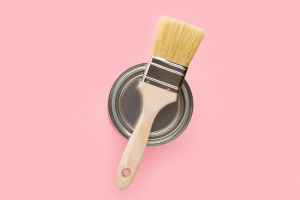Flower arranging is an artful craft, and for beginners, mastering some basic techniques can help better express creativity and emotions throughout the process.
Here are five practical tips to help you get started in the world of floral art.
1. Choose the Right Flowers
The first step in flower arranging is selecting the right materials. For beginners, it is crucial to choose flowers that are easy to handle and durable. Roses, lilies, and carnations are excellent choices as they are not only vibrant in color but also relatively easy to care for.
Additionally, considering the season and regional influences by choosing locally sourced, seasonal flowers can enhance the quality and freshness of your arrangement. To add depth, incorporate some greenery, such as ivy and eucalyptus, which can fill space and bring life to your floral creation.
2. Understand Basic Composition
Composition is a vital aspect of flower arranging. Beginners can start by learning some fundamental composition techniques, such as the "golden ratio" principle. You can divide the vase into three sections, placing the main flowers in the middle section while evenly distributing other materials and foliage on either side.
Another common technique is to use flowers of varying heights to create a sense of layering, making the entire bouquet appear more natural and lively. Remember to maintain overall balance in your arrangement, avoiding overcrowding on one side.
3. Learn to Trim Stems
Trimming stems is an essential step in flower arranging. Beginners should start by using scissors to cut each stem at an angle, which increases the water absorption area and prolongs the flowers' life.
Additionally, regularly trimming the stems submerged in the vase helps maintain water absorption. During the arranging process, remove any excess leaves from the bottom to prevent them from sitting in the water and rotting, which can negatively affect the flowers. Always use clean tools to avoid introducing bacteria.
4. Color and Shape Coordination
The combination of color and shape plays a crucial role in floral artistry. As a beginner, you can experiment with contrasting and complementary colors to create visual impact.
For example, red roses paired with green foliage create a striking contrast that highlights the beauty of the blooms. In terms of shape, mix flowers of different forms, such as combining open blooms with more compact ones, to enrich the overall visual layering of the arrangement.
5. Regularly Change the Water
To maintain the freshness of your arrangement, regularly changing the water is essential. Replace the water every two days to prevent bacterial growth. The temperature of the water can also impact the condition of the flowers, so try to use lukewarm water, which can help the flowers absorb moisture more effectively.
Flower arranging is an art form that requires patience and creativity, especially for beginners. By mastering some basic techniques—selecting suitable flowers, understanding fundamental composition, learning to trim stems, coordinating colors and shapes, and regularly maintaining the flowers—you will be able to create beautiful and vibrant floral arrangements.


